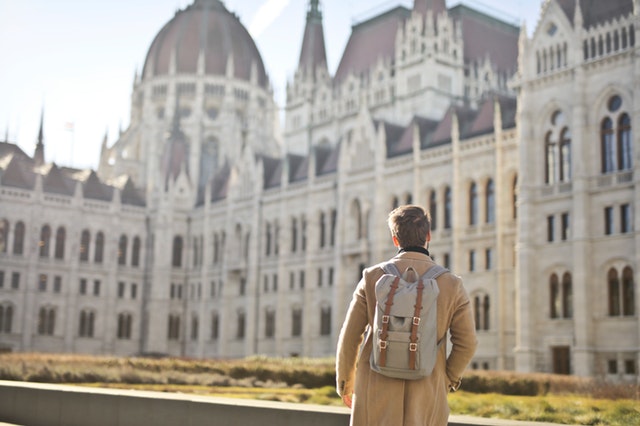
Image Source: Pexels
We’ve all heard the stereotypes about American tourists. Travelers from the USA supposedly wear white tennis shoes, talk loudly, and laugh too much. Some would even describe us as abrasive or ignorant, especially when it comes to the culture and customs of other countries.
A large part of these stereotypes actually reflects a lack of understanding. Americans don’t wear the wrong clothes or talk obnoxiously loud to get on Europeans’ nerves – they simply don’t know any better.
If you’re heading to Europe soon, don’t be one of those American tourists who come across as unaware and annoying. Here are five guidelines that will help you fit in no matter where you travel across the Atlantic.
1. Don’t Assume Everyone Speaks English

Image Source: Pexels
This is one of the biggest mistakes to be wary of while traveling abroad.
Depending on where you’re traveling in Europe, residents may or may not speak English. It’s the predominant language in the United Kingdom and Ireland, but it’s only the fourth most common European language across the board.
Don’t make the mistake of assuming everyone understands English just because some Europeans do. It never hurts to politely ask if they speak your language. If not, do your best to translate your message appropriately. Note: talking louder doesn’t make English any clearer to someone who is unfamiliar with the language. Be calm and respectful, and rely on a translating app or book if necessary.
2. Dress Appropriately for Your Activities

Image Source: Pexels
As an American tourist myself, I’ll admit that I’ve embarrassingly worn a tank top and shorts to a church in Spain, only to be turned away at the door because of my attire. Many countries in Europe have very different standards on what is considered culturally appropriate clothing. If you’re planning on visiting religious sites and churches, it’s best to leave your skimpy clothing at the hotel.
Also, you’ll often notice that people in Europe simply dress nicer than many Americans do. Sweatshirts and leggings are rarely seen, even on European university campuses. Do some research ahead of time and pack simple but nice outfits so you’ll blend in better.
3. Tip Like a European, Not an American

Image Source: Pexels
In America, the diner’s tip often makes up a hefty chunk of the server’s pay. Therefore, it’s customary to tip between 15 and 20 percent on each meal. In Europe, this isn’t the case. A tip is viewed as an appreciative gesture for nice service. You might round up your bill to add a little something extra for your excellent waiter, but leaving a bigger tip than that is unnecessary. In fact, large tips confuse many European servers, so just stick to a nice thank you gesture.
4. Stick to General Public Transportation Etiquette

Image Source: Pexels
If you’ve had any experience with public transportation, you know that there are certain unspoken rules, no matter where you travel. For instance, you don’t cram onto a train until everyone has gotten the chance to exit. In Europe, these rules are especially important. Pushing past other people, talking loudly on the underground subway, or hogging space will certainly associate you that unpleasant American stereotype. Also, make sure you stick to the right side of the street when walking or using stairs – people get huffy when they can’t move past you efficiently.
5. Remember That People Live There
Image Source: Pexels
Sure, that painted door in Amsterdam is really cute, and that house in England was the perfect backdrop for your Instagram post. However, you need to remember that these buildings are people’s homes. Don’t trespass on private property or intrude on living quarters. Be respectful of local residents, no matter how new and exciting the area seems to you. No social media post is worth offending others.
To Sum It All Up
Being a polite American tourist in Europe is actually quite easy. Mind your manners, be aware of others, and look into cultural customers before you go. Different countries have different ways of doing things, and as long as you’re respectful, you should be able to blend in well with locals while still experiencing everything Europe has to offer.





1 Comment